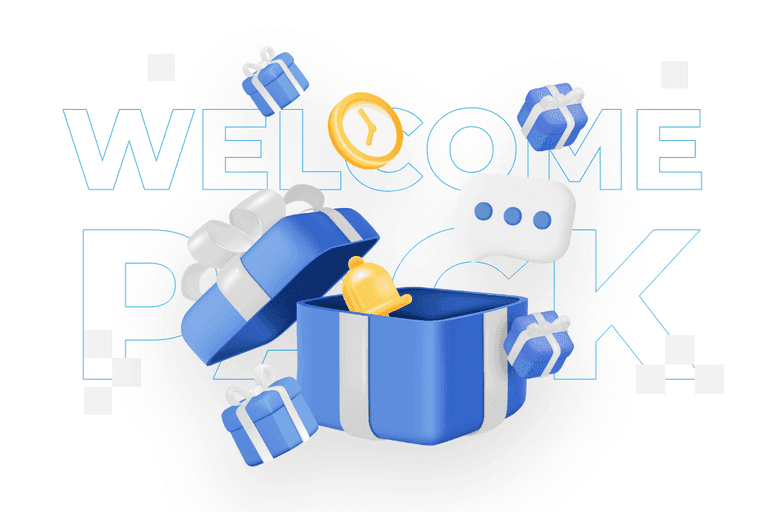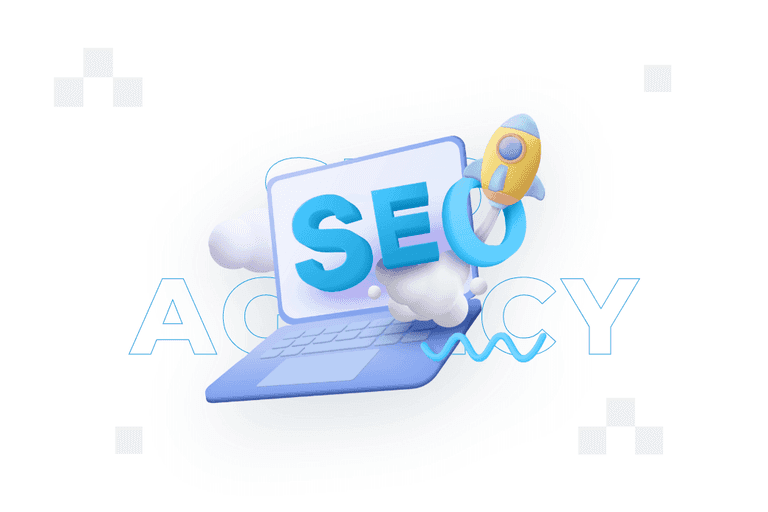
Welcome pack – what is it and what might it look like?

First impressions are vital, and a welcome pack is a powerful tool to help new employees feel like a valuable part of the team from day one. How can an effectively designed welcome pack transform the onboarding process and contribute to the long-term success of a company?
In this article you will find out:
- What is a welcome pack?
- What are the functions of a welcome pack?
- What are the components of a welcome pack?
- How do you design a good welcome pack?
- What are some examples of welcome packs?
- What can you gain from welcome packs?
Welcome pack – definition
A welcome pack, also known as a welcome package, is a set of items and information prepared to welcoming a new employee to an organisation, company, event or community. It can include information material, instructions, gifts, work tools, company products, gadgets and other items designed to create a positive first impression.
A welcome pack is a set of materials and items prepared by a company to welcome and integrate new employees.
What is a welcome pack?
The welcome pack plays a key role in the process of introducing a new employee to an organisation, being not only a symbol of hospitality but also a practical tool to facilitate the onboarding of the employee. It is the employee’s first physical point of contact with the company’s culture and brand, often creating a first, lasting impression. It demonstrates the company’s interest and investment in the newly hired employee, which can significantly affect their engagement and perception of the workplace.
Functions of the welcome pack
A welcome pack has many functions and is more than just a collection of items. On the one hand, it is a greeting that helps the new team member feel welcome and valuable to the organisation. At the same time, it is a source of knowledge that provides newcomers with key information on how the company operates, its structure or its rules. You could say that the welcome pack is a kind of instruction manual for new employees.
The motivational aspect is also important – a well-prepared and well-thought-out package can boost morale and enthusiasm, encouraging a positive approach to the challenges of a new job. It also demonstrates the organisation’s concern for the employee, which can reinforce their commitment and sense of being an important part of the team.
In the long-term context, the welcome pack fosters a lasting bond between the employee and the company – through positive experiences, the employee can develop loyalty to the employer more quickly, which is important in employee retention and allows, from the very first days of work, to lay the foundation for a long-term and fruitful relationship.
Elements of the welcome pack
The elements of a welcome pack may vary depending on the company, its culture and the specifics of the job, but there are a few key ingredients that should be included in every welcome pack:
- Orientation materials, such as documentation to help orient you to the company’s structure, history, culture, values, internal policies, procedures and expectations.
- An onboarding guide or schedule that outlines the first days or weeks at the company, including meetings with key people, training sessions and goals for the new employee to achieve.
- Items needed to carry out day-to-day duties – this could include, for example, access to computer systems, ID badges, notepads, pens or other office accessories.
- A contact list with details of important people in the organisation, such as supervisors, HR department members, technical support, etc., so that the new employee knows where to look for help and support.
- A policy on communication within the company, including an explanation of what the preferred communication channels are, availability expectations and protocols for urgent situations.
- Something to help the employee feel part of the team – this could be a company t-shirt, mug or other goodies.
- Guidance on how and where a new employee can voice their opinions and receive support, which is important for their development and adaptation in their new workplace.
Each of these elements plays an important role in facilitating a smooth transition for new employees and helping them to quickly integrate into the company’s structures.
Designing welcome packs
Designing welcome packs requires an understanding of and empathy towards newly hired employees, as well as knowledge of the company’s culture and values. The process should be seen as a strategic onboarding element that goes beyond a simple welcome pack and becomes an integral part of the employee experience.
To begin, the purpose and message of the welcome pack needs to be defined – it should reflect what the company is and expects from its employees, as well as what it wants to provide for them. You need to empathise with the new employee and think about what they might need and what will make them feel valued and appreciated.
It is also worth focusing on the usability of the content – everything included in the package should serve a specific purpose and be tailored to the employee’s daily work and needs. For example, if the employee will be using a laptop frequently, an external USB memory stick or mouse pad could be a practical item. The items should be of high quality – a welcome pack is an investment in first impressions. This does not change the fact that you should have too many gadgets or promotional materials.
Aesthetically, the design should reflect the brand and be consistent with its image. It is not just about the company logo, but also the colours, typography and overall style associated with the brand. This consistency helps to build the employer brand and the company image in the eyes of the employee. The possibility of personalisation should also be taken into account. A welcome pack that includes elements tailored to the person receiving it can increase the feeling of being noticed by the employer.
Examples of welcome packs
The things that can be included in a welcome pack vary depending on the nature of the company, the industry and the budget, but here are some of the possible items:
- Information materials, e.g. a guide for new employees, brochures on the company’s mission, vision and values, a handbook on company policies and procedures, an orientation plan for the first days of work.
- Work tools, e.g. company bag, backpack, laptop case, notepad and pen, memory stick, external hard drive with company logo, desk calendar, planner.
- Office accessories, e.g. calculator, mouse pad, computer screen cleaning kit.
- Technology, e.g. bluetooth headphones or speaker, docking station or wireless charger
- Personal items and apparel, e.g. t-shirt, sweatshirt or other apparel with company logo, thermal mug, water bottle, thermos, key ring, pin or other small brand-related accessories
- A yoga mat or voucher for a fitness class, a healthy snack pack, a gift card to a spa or a massage
- A photo frame, scented candles, a small office plant in a pot with the company logo.
- Gift cards to local restaurants or cafes or vouchers for shopping in the company’s gadget shop
- Company goodies such as key rings, stickers, magnets, a book written by the founder or management of the company
- Shopping bags made from recycled materials, metal straws or a reusable cutlery set
Remember that the items should fit not only the company’s business profile, but also its culture and the nature of its work. Here are some examples of welcome packs that can be adapted to different types of organisations and industries:
- A welcome pack at an advertising agency might include a set of stationery items with the company logo, a concept drawing workbook and an access card to an internal project management system. It might also include a lavishly illustrated guide to the company, which tells the story of the agency’s philosophy and greatest successes, and a colourful, interactive map of the office with highlights such as the creative room or photo studio.
- A technology company’s welcome pack focuses on innovation, so in addition to standard materials such as corporate clothing and office accessories, it can offer technology gadgets such as power banks with the company logo. It may also provide access to online training platforms and libraries, and be complemented by a guide with best practices for remote working and ergonomics.
- A welcome pack at a law firm is characterised by formality and professionalism, so in addition to a smart pen and hardcover notebook, it may include a book with key legal regulations and the firm’s code of ethics, a guide to firm procedures and practices, and a high-quality business card holder.
- A welcome pack at a not-for-profit organisation can highlight the social mission and ethical characteristics of the organisation and include handouts about current projects and the impact the organisation has on the community. Modest but symbolic gifts can also be included, such as seeds for planting a tree or a cotton shopping bag.
Each of these examples demonstrates the importance of tailoring the contents of the welcome pack to the specific industry, organisational culture in a company and needs of new employees. The aim is not only to provide useful items, but also to convey the company’s values and identity, and to support new employees
Benefits of welcome packs
At the most basic level, welcome packs provide new employees with the necessary tools and resources they need to start work quickly and efficiently. But this is just the tip of the iceberg in terms of potential positives. For a new employee, the start of a new job is often fraught with uncertainty – a welcome pack can significantly alleviate the stress of adaptation by showing that the employer has anticipated the employee’s needs and is ready for their arrival. It’s a gesture that can help you feel like an important member of the team.
From an organisational perspective, welcome packs are the first step in building a strong relationship with an employee. They showcase the company’s culture and values, which is particularly important at a time when employees are looking for a workplace that reflects their personal values and aspirations. They can also help to present a consistent brand image. They also have long-term benefits, such as increasing employee engagement – team members who feel valued from day one are more likely to invest their time and efforts in the company.
A welcome pack can provide important information in an attractive way, which is key in onboarding. In addition, it can serve as a starting point for an employee’s professional and personal development within the organisation – if the pack includes tools and resources to support skills development, employees can feel that they are being invested in their future, which can strengthen their loyalty and job satisfaction. In this context, it is worth noting that the benefits of welcome packs spread through employees to the wider labour market. Happy employees often share positive experiences, which can enhance a company’s reputation as a desirable place to work.
FAQ
Contact form
Develop your brand
Rate content:
You may be interested in:




